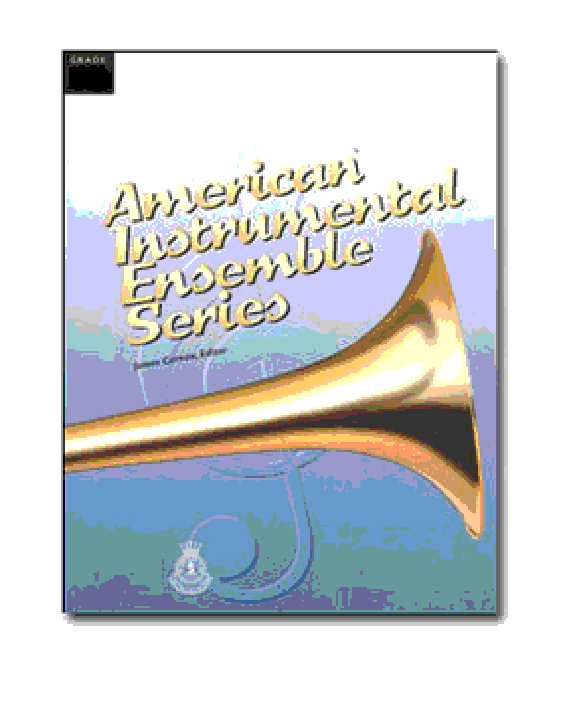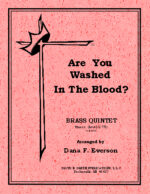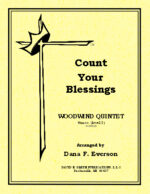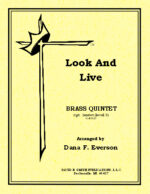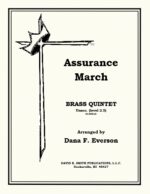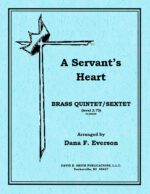| Instrument | |
|---|---|
| Level | 4 |
| Occasion | |
| Theme | When The Roll Is Called Up Yonder |
| Writer | |
| Publisher | |
| Copyright | 2009 |
| Comments | When The Roll Is Called Up Yonder |
When The Roll Is Called Up Yonder (Solo Bb/C)
$24.95
Related products
-
-
Count Your Blessings
$9.00Be ye thankful! Written for standard woodwind quintet with optional parts, this piece is highly decorated melodically and active rhythmically. It gives both the sense of majesty and joy.
-
A New Name In Glory
$9.00A brass quintet with opt. Trumpet for horn and baritone TC. It begins with fanfare motifs of the tune and then breaks into the hymn adding more parts as it progresses. It continues with a Q&A type of dialog between the lower, then upper voices. The second setion in a different key is reminiscent of the opening only this time in the middle voices and again moves in a Q&A type of dialog. Again modulating to a new key the theme is bounced around with rhythmical interest only to finalize in strong chordal patterns and ending on a bold declamation.
-
Look And Live
$12.00A traditional brass quintet with opt. trumpet for horn and extra baritone for use as a sextet. The introduction uses extraneous material where it leads in the first theme in the French horn, supplemented by trombone counterlines and trumpet flourishes. Thematic movies are then embellished leading up to a modulation where the tempo slows and a new mood encountered. The first trumpet carries the lead and offset with a horn duet line. Another modulation, an a-tempo with the theme in the low brass and accompaniment lines in the middle brass. This continues until the voices stack up until a boisterous conclusion is achieved.
-
Assurance March
$9.00A traditional brass quintet with opt. trumpet for horn and extra baritone for use as a sextet. A piece in Alle Breve, is simply stated in block chords with an active bass line. The first strain, is repeated, and follows traditional march scoring. The second section is a bit slower and again in block chord structure, but this time with a first trumpet obbligato. With a regaining of tempo and style the piece becomes stronger until a grandiose ending.
-
A Servant’s Heart
$10.00A brass quintet, optionally sextet, begins with a soulful trombone solo joined with the remainder of the lower brass instrument only to be taken over by the trumpets. The middle section uses a punctuated accompaniment for nice variety only to migrate to the flowing style of the beginning. It then ends in solemn repose.
-
-
I Will Sing Of The Mercies
$9.00A woodwind quintet with opt. parts for Alto Sax and Bass Clar. This piece presents itself with a sense of joy throughout with the introduction itself in a motivic manner setting the tone The piece passes through several modulations where the upper voices carry the melodic material while the lower voices support the ensemble with strength. The writing of this arrangement is well crafted to take advantage of the “woodwind quintet sounds.” It continues that way right up to the very end with a declamatory statement of “Mercy.”

